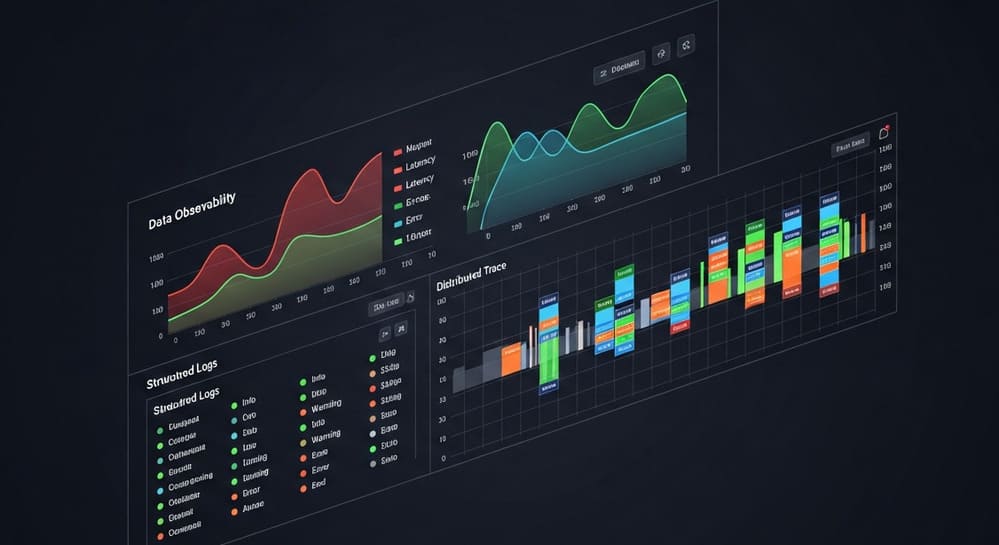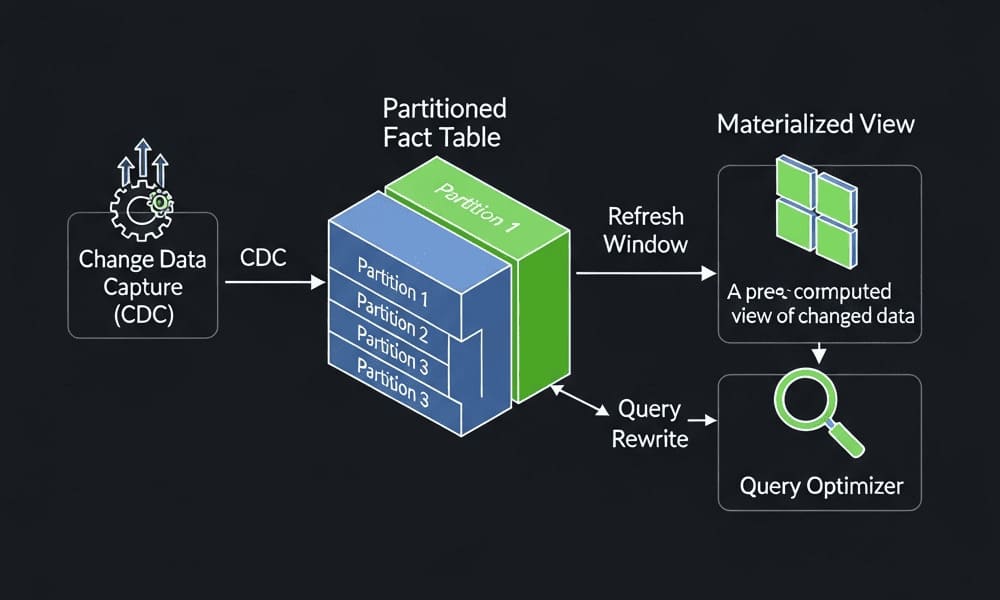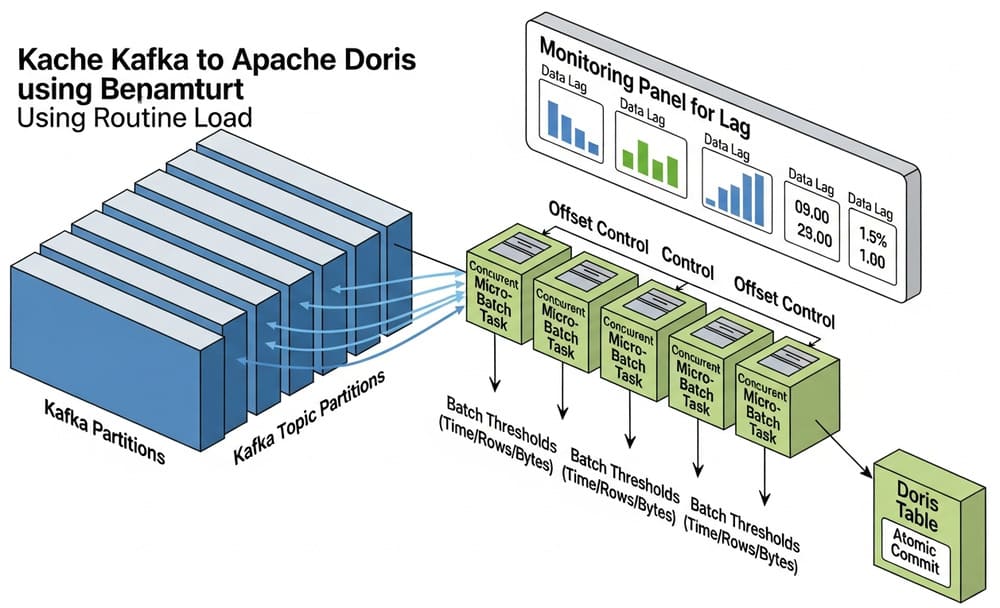Apache Pig for Data Engineers: When It Still Makes Sense—and How to Use It Well
Introduction: “We’ve got 200 legacy Pig scripts… now what?”
You inherit a Hadoop cluster. A pile of nightly ETL jobs runs in Apache Pig, and nobody wants to touch them. Sound familiar? While Spark has taken the spotlight, Pig still powers lots of stable, batch-style pipelines. If you need to understand, maintain, or optimize Pig jobs—or migrate them cleanly—this guide gives you a crisp, engineer-to-engineer playbook.
What Apache Pig Is (and Isn’t)
What it is:
A high-level dataflow language (Pig Latin) for writing parallel data transforms on Hadoop. Pig compiles your script into a logical plan, then into MapReduce (or Tez where configured), and executes on the cluster.
What it isn’t:
It’s not a query engine for ad-hoc analytics like Hive (SQL) or a general compute framework like Spark. Pig shines for repeatable batch ETL on HDFS data.
Core building blocks
- Data model: relations (tables) of tuples; supports bags (collections), maps, scalars.
- Execution: Pig Latin → logical plan → MapReduce/Tez jobs.
- Interfaces:
gruntshell, scripts (.pig), UDFs (Java most common; Python/Streaming possible). - IO:
LOAD/STOREwith loaders/storers (e.g.,PigStorage,TextLoader, Parquet loaders).
Pig Latin by Example (Real-ish ETL)
Scenario: Clean web logs, join with user attributes, compute daily KPIs, and store in partitioned output.
-- Parameters (can be passed with -p)
%default LOG_DATE '2025-11-24'
%default PAR 64
-- 1) Load raw logs and user dim
raw = LOAD '/data/logs/access/date=${LOG_DATE}/*'
USING PigStorage('\t')
AS (ts:chararray, ip:chararray, user_id:chararray, path:chararray, status:int, bytes:long);
users = LOAD '/warehouse/dim_users/current/*'
USING PigStorage(',')
AS (user_id:chararray, country:chararray, plan:chararray);
-- 2) Filter early + project narrow
clean = FOREACH (FILTER raw BY status == 200 AND path IS NOT NULL)
GENERATE user_id, path, bytes;
-- 3) Small reference replicated join (broadcast)
enriched = JOIN clean BY user_id, users BY user_id USING 'replicated';
-- 4) Derive metrics
by_user = GROUP enriched BY (user_id, plan, country) PARALLEL $PAR;
agg = FOREACH by_user GENERATE
FLATTEN(group) AS (user_id, plan, country),
COUNT(enriched) AS hits,
SUM(enriched.bytes) AS bytes_total;
-- 5) Store partitioned by date (downstream tools expect one dir per day)
STORE agg INTO '/warehouse/facts/web_usage/date=${LOG_DATE}'
USING PigStorage(',');
Why it works:
- Filters and projections happen before the join to shrink data.
- Uses replicated join when
usersis small—avoids a huge shuffle. - Parallelism is explicit via
PARALLEL.
Architecture & Execution Flow (Mental Model)
- Parse Pig Latin → logical operators (LOAD, FILTER, JOIN…).
- Optimize (predicate pushdown, projection pruning where possible).
- Compile to MapReduce/Tez jobs; set reducers based on
PARALLEL, data size, and join/group operations. - Run on YARN; task logs are your first stop when jobs are slow.
- Inspect plans with
EXPLAINand samples withILLUSTRATE.
Best Practices (That Actually Move the Needle)
- Filter and project early. Smaller tuples = faster shuffles and less spill.
- Choose the right join:
USING 'replicated'for tiny dim tables.- Standard hash join for balanced keys.
- Consider skewed keys—preprocess hot keys or split flows.
- Control parallelism: Use
PARALLEL NonGROUP,ORDER, heavyJOINs. Start with cluster defaults, then tune. - Avoid tiny files: Batch inputs/outputs; write fewer, larger files to HDFS.
- Schema everything: Always specify
AS (...). Untyped bags/tuples cause surprising nulls and runtime errors. - UDF discipline: Keep UDFs pure, small, and serializable; cache small dictionaries in memory, not HDFS per call.
- Debug smartly:
SAMPLE,LIMIT, andILLUSTRATEto validate shape before full runs. - Compression & formats: Prefer columnar (Parquet) when downstream supports it; compress intermediates to cut IO.
Common Pitfalls (And Quick Fixes)
- Null explosions: Missing fields or bad casts? Add schemas and
FILTER x BY (field IS NOT NULL). - Key skew in GROUP/JOIN: Detect with
SAMPLE+ histogram; split hot keys to a separate path. - Under/over parallelism: Too few reducers = long tails; too many = overhead. Benchmark.
- UDF performance cliffs: Avoid heavy per-record network calls; pre-load ref data; batch where possible.
- Uncontrolled small files: Consolidate with a final
GROUP ALL+FOREACHor downstream compaction job. - Opaque plans: Use
EXPLAIN—know exactly how many MR/Tez stages you’re creating.
Pig vs Hive vs Spark (When Each Fits)
| Criterion | Pig | Hive (SQL) | Spark |
|---|---|---|---|
| Paradigm | Dataflow (procedural) | Declarative SQL | General compute API (RDD/DataFrame) |
| Best for | Legacy ETL flows on HDFS | SQL analytics, BI integration | New pipelines, mixed batch/stream, ML |
| Learning curve | Moderate if you know MapReduce | Low (SQL) | Moderate |
| Interactivity | Low | Medium (LLAP/engines) | High (notebooks) |
| Ecosystem | Mature, shrinking | Very mature | Most active |
| Migration path | Pig → Spark DataFrames | SQL mostly portable | N/A |
Blunt truth: For new builds, choose Spark or Hive. For existing Pig that “just works,” stabilize, add tests, and only migrate when you need capabilities Pig can’t deliver (streaming, interactive analytics, ML, lakehouse patterns).
Migration Playbook (If/When You Move Off Pig)
- Inventory & classify scripts by size, SLA, dependencies.
- Gold path first: Pick one representative pipeline; reproduce outputs bit-for-bit in Spark.
- Operator mapping:
LOAD/STORE→ Spark read/write.FILTER,FOREACH…GENERATE→select,withColumn,filter.GROUP…FOREACH→groupBy().agg(...).JOIN(replicated) → broadcast join.
- Deterministic outputs: Sort, normalize nulls, and format to match downstream contracts.
- Parity tests: Row counts, checksums per key, sample diffs.
- Cutover: Dual-run, compare, then swap.
Useful Pig Patterns (Snippets You’ll Actually Reuse)
Skew-safe join via pre-splitting hot keys
hot_keys = LOAD '/config/hot_user_ids' USING PigStorage(',') AS (user_id:chararray);
is_hot = JOIN clean BY user_id LEFT OUTER, hot_keys BY user_id;
hot = FILTER is_hot BY hot_keys::user_id IS NOT NULL;
cold = FILTER is_hot BY hot_keys::user_id IS NULL;
-- broadcast small side for hot keys
hot_join = JOIN hot BY user_id, users BY user_id USING 'replicated';
cold_join = JOIN cold BY user_id, users BY user_id; -- standard join
enriched = UNION hot_join, cold_join;
Sampling for quick plan validation
tiny = SAMPLE enriched 0.01;
DUMP tiny;
ILLUSTRATE enriched;
EXPLAIN -out explain.txt enriched;
Write compressed Parquet (if loaders are available in your distro)
SET parquet.compression codec snappy;
STORE agg INTO '/warehouse/facts/web_usage/date=${LOG_DATE}'
USING parquet.pig.ParquetStorer();
Operational Tips
- Parameterize dates/paths; run with
pig -p LOG_DATE=2025-11-24 job.pig. - Version configs (parallelism, Tez vs MR) per environment.
- Observability: Capture
EXPLAINartifacts and task counters with every release. - Backfills: Use arrays of dates and run safely in parallel; enforce idempotent outputs (write to temp dir, then move).
- Cost control: Compress intermediates, prune columns, and right-size reducers.
Conclusion & Takeaways
- Pig is still viable for stable, nightly batch ETL on HDFS—especially in legacy estates.
- You can keep Pig fast by filtering early, choosing the right join, and setting parallelism.
- For greenfield or feature growth, Spark/Hive is the practical future.
- If migrating, treat it like a software rewrite: operator mapping, parity tests, deterministic outputs.
Bottom line: Make a deliberate call—stabilize what exists, or migrate with discipline. Don’t live in the indecisive middle.
Internal link ideas
- “Broadcast Joins in Spark: Replacing Pig’s Replicated Join”
- “Designing Idempotent Batch Pipelines on HDFS/Lakehouse”
- “From MapReduce to DataFrames: A Pragmatic Migration Guide”
- “Columnar Formats 101: Parquet vs ORC for ETL”
Image prompt
“A clean, modern dataflow diagram of an Apache Pig pipeline on Hadoop: Pig Latin script → logical plan → MapReduce/Tez jobs → HDFS outputs. Minimalist, high-contrast, 3D isometric style with labeled stages and data partitions.”
Tags
#ApachePig #Hadoop #DataEngineering #ETL #BigData #MapReduce #Tez #Parquet #Performance #Migration




